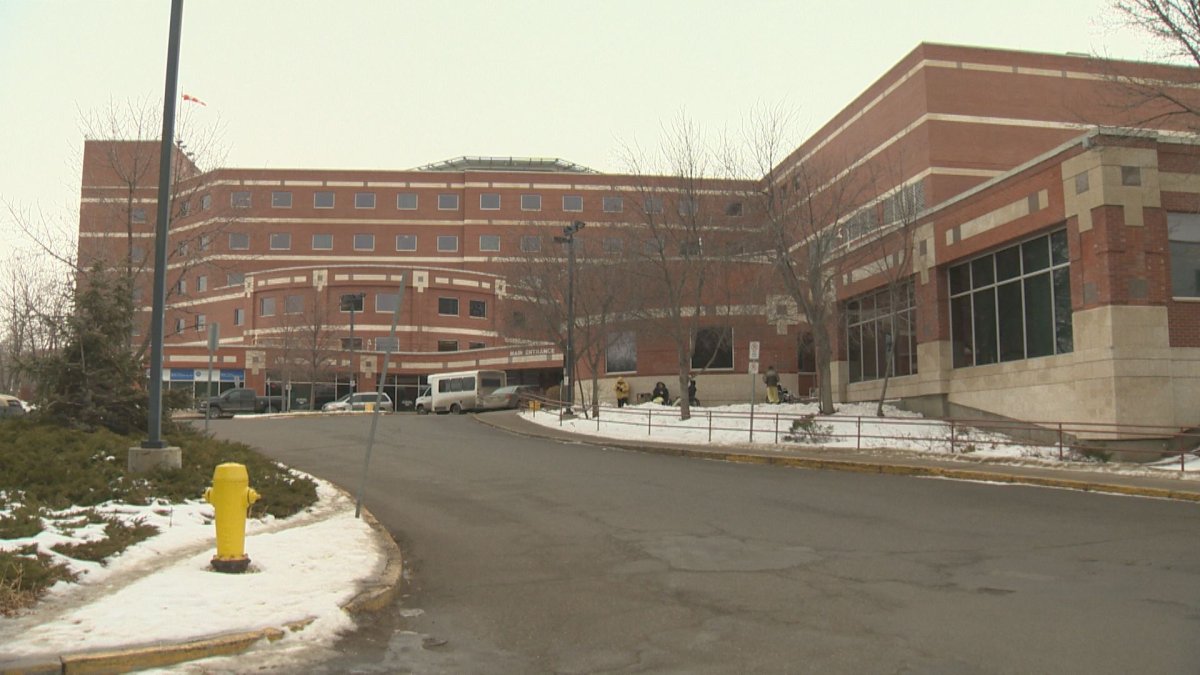There is a high likelihood that COVID-19 transmission is out of control in a growing swath of the province, according to the latest Saskatchewan Health Authority (SHA) presentation to physicians.

A map of the province on slide 15 of the 91-slide slideshow doctors saw during their weekly townhall Thursday was publicly posted Monday. Of the 32 subzones being monitored in relation to the pandemic, a group of 23 were shaded red for the week of April 21-27. Red indicates a “high likelihood that COVID transmission is not controlled,” says the slide, titled Assessed Risk of Epidemic Transmission by Zone.
The week prior, also pictured on the slide, has only 12 marked with red.
Dr. Johnmark Opondo, the SHA medical health officer going over the slide on Thursday, described the situation as “outbreak threshold in central and southern Saskatchewan.”
The remaining nine zones in the geographically larger but less populous northern part of the province are either marked on the slide as “high risk that COVID transmission is not controlled” or that “COVID transmission is controlled, but there is a risk of community transmission.”
“Basically, COVID is everywhere,” Opondo told his colleagues at the presentation, which has since been shared virtually as well.
For months, Saskatchewan’s test-positivity rate has been above the World Health Organization’s recommended five per cent. As of Thursday, it was at seven per cent.
Having a test positivity rate is understood to be an indicator that too few tests are being done to catch infections.
In March, the more contagious and more severe B1.1.7 COVID variant became the dominant strain in Regina.
John Ash, the SHA’s executive director of acute care in the capital city, noted during the during the presentation that on Nov. 25, 2020, when the province’s seven-day rolling average was 243 new daily cases, there were 85 non-ICU hospitalizations and 23 ICU admissions. On April 10, when the seven-day rolling average was exactly the same, there were 161 non-ICU hospitalizations and 48 ICU admissions.
Throughout all of January, before the variant changed the nature of the virus, 33 people were admitted to the ICU in Regina, according to the presentation. In February, there were 31 intakes. In March, 57. The data the doctors got for April only covered the first three weeks — and there had already been 68.
Not only was there an apparent doubling in patients during that time frame, there was also an approximate doubling in their length of stay, which in January, was eight days. Between April 1 and 26, it was 14 days.

Get weekly health news
“This is directly correlated to the variant of concern,” Ash said, describing it as putting “very tight pressure” on not only Regina’s system, but the entire system.
The COVID and non-COVID ICU seven-day rolling average peaked peaked in April at 100.
“The predominance of that increase has just been because of Regina,” Ash said, adding that as of Thursday, it was 86.
Regina has had more stringent restrictions in place than other parts of the province, including a travel advisory.
“What we are concerned and keeping a very close eye on is: how quickly will Regina come down?” Ash said. “We’re starting to see signals of the north and potentially Saskatoon increasing.
“Is there going to be an overlap where Regina is still at or above its normal ICU capacity and Saskatoon is climbing in its capacity?” he asked.
Some COVID ICU rooms in Regina became double occupancy in mid-April, doctors working in city’s hospitals said back then.
Ash noted that as of Thursday, the ratio of one nurse to one patient had also shifted and in some cases, was one nurse to two patients. He added that non-traditional ICU staff were augmenting the burden of care.
The critical care course is normally 11 weeks long, said Ash, noting that the “upscaling” for nurses in the pandemic is condensed into three days.
“This gives you a sense of the degree of training that is typically there in the ICU and what potentially it could result in,” he said.
The health authority is still working to recruit doctors through its Physician Skills Enhancement program. It is targeting 160 through its hospital pandemic skills program and has 53, data in the presentation shows.
It wants 95 trained in its emergency pandemic skills program and has 29.
And for the ICU pandemic skills program, which the presentation describes as “most urgently needed,” its target is 80. It has 64.












Comments